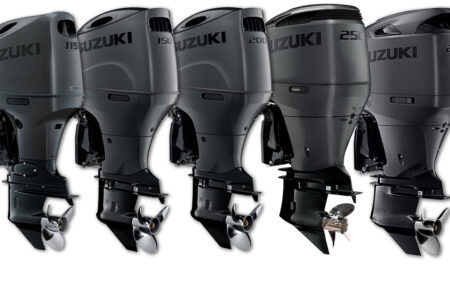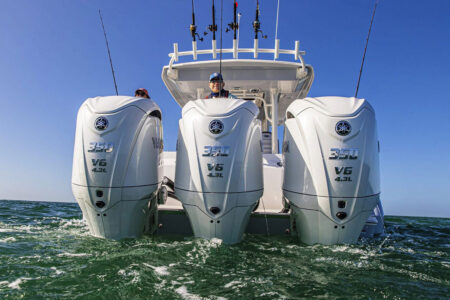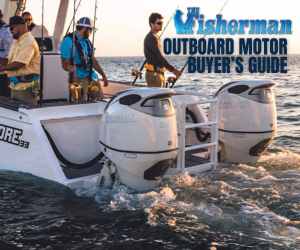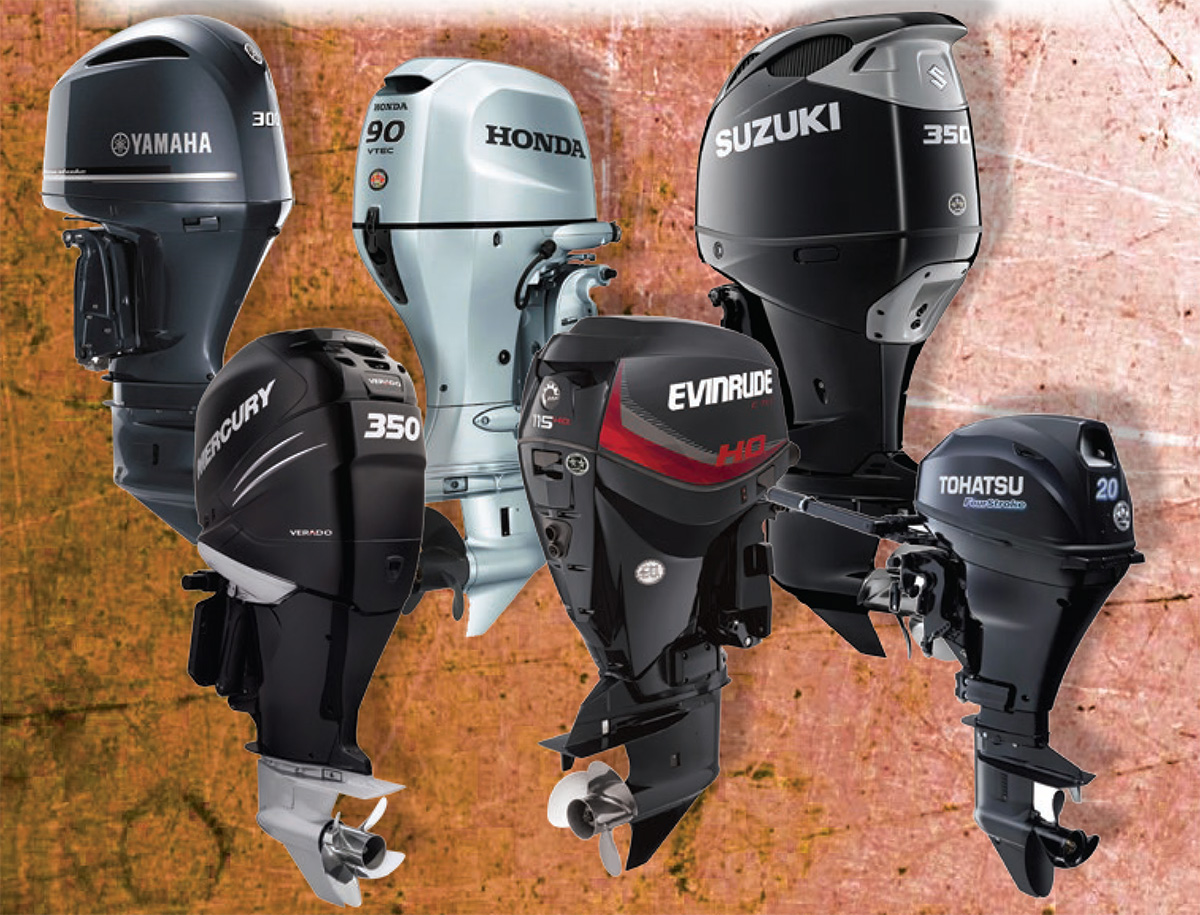
With the economy finally showing some signs of life and consumer confidence moving in the right direction, the boating industry in general and the outboard component in particular are both riding in the fast lane. Technological advances are enabling outboards to work smarter, with improved real-time information that can be shared with other pieces of your marine electronics suite, enhanced fuel economy and added longevity. Whether equipping a new boat or repowering an old favorite, it’s a great time to talk about new outboard motors, so let’s get right into finding out what’s new for the upcoming 2018 model year.
Yamaha
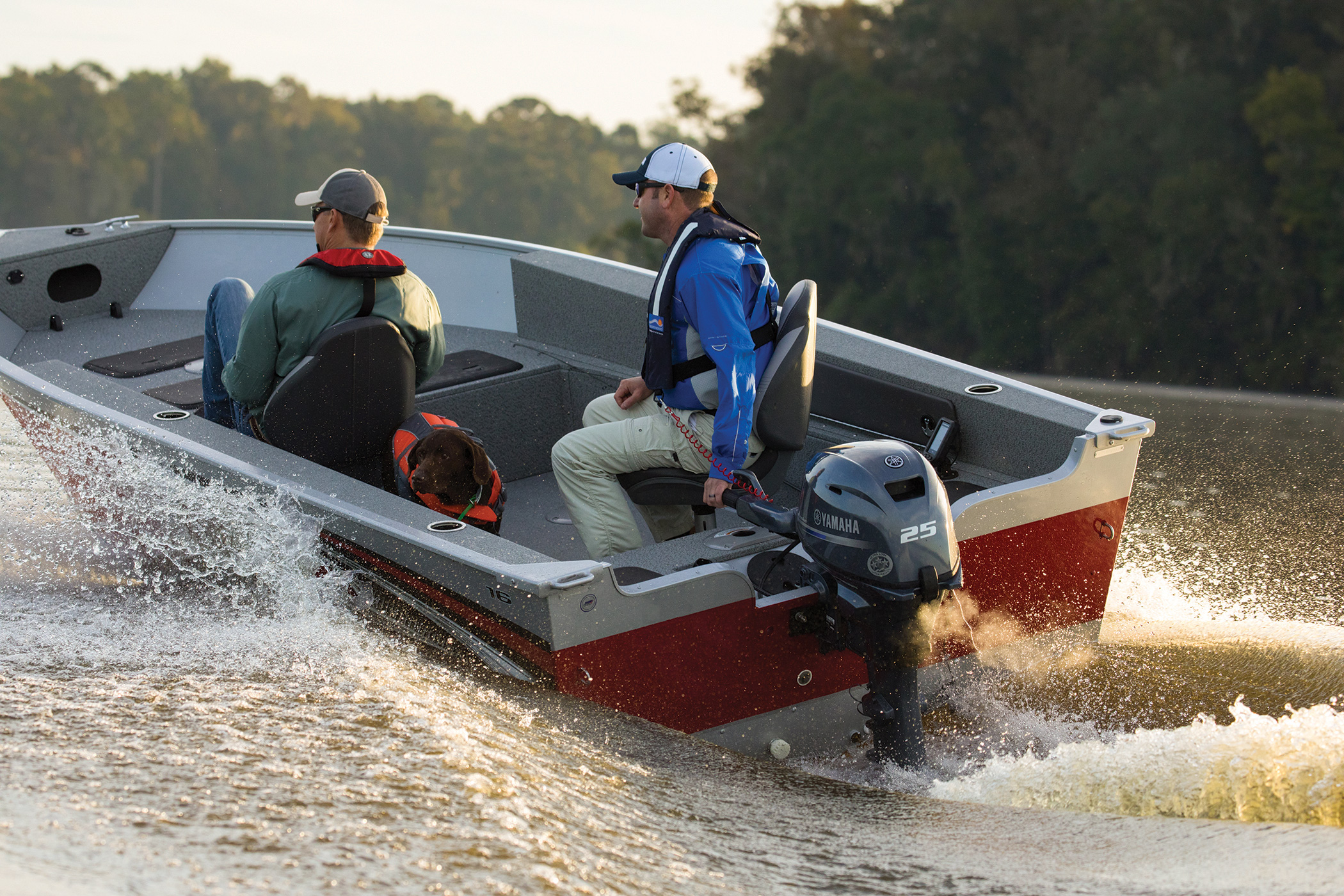
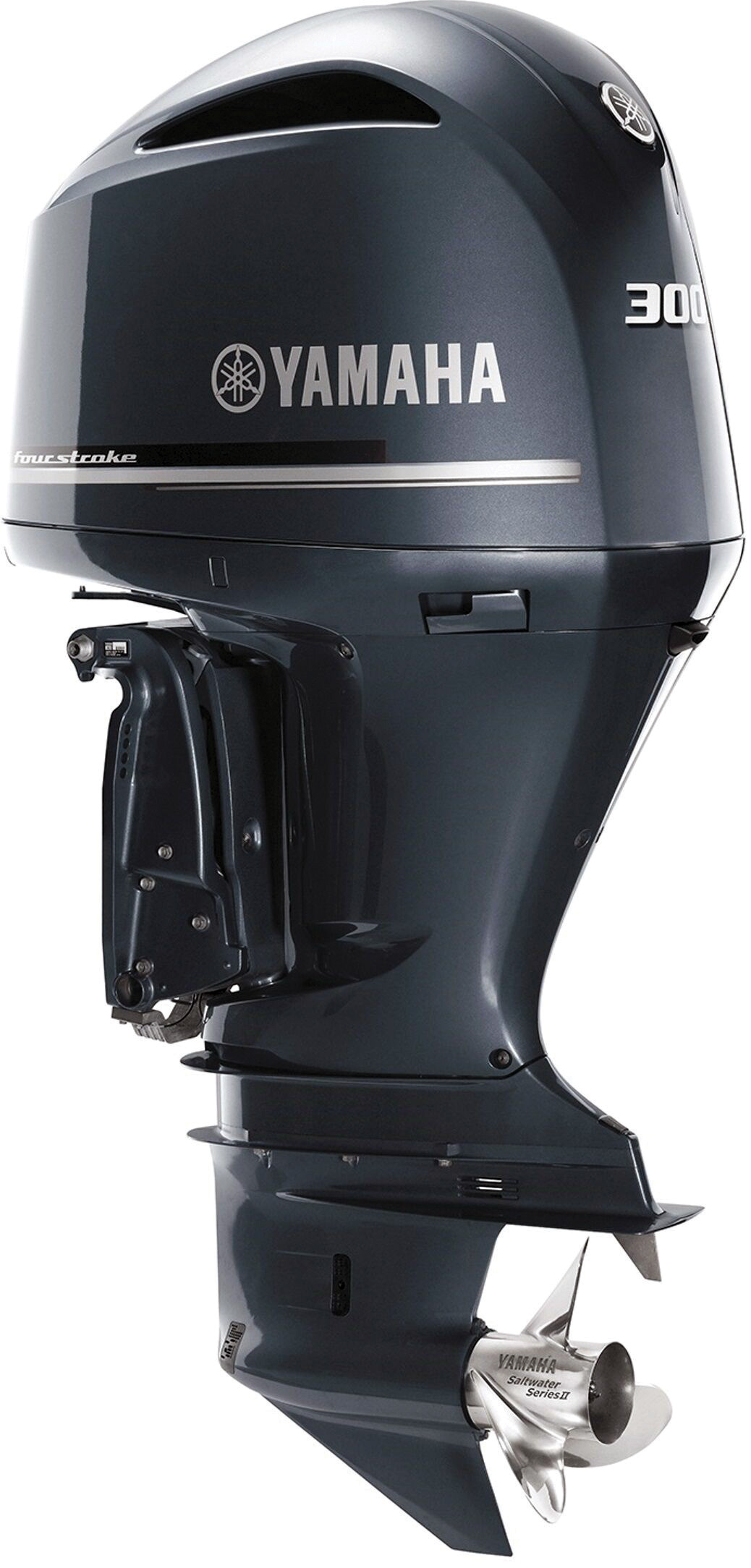 Yamaha has two new offerings for 2018, with the possibility of some even more interesting news slated for the upcoming Miami Boat Show. Their new F25 has one of the best power-to-weight ratios in its class and features no-battery-required electronic fuel injection and an all-new two-cylinder powerhead. Two valves per cylinder and a single overhead cam translate to a lighter profile and replacing the balky carburetor with an EFI system makes for easy starting and sprightly performance out on the water. The Variable Trolling rpm switch (VTS), which is standard on all F25C tiller handle models, allows boats to troll slower for better fishing. Improved, built-in carry handles provide greater portability and easier handling, with resting-pads on two sides for more storage options. The external oil draining system simplifies maintenance. CDI microcomputer ignition monitors throttle position, engine speed and atmospheric conditions to precisely adjust ignition timing under all conditions for optimum ignition performance. A 45-degree steering angle on either side of center offers great maneuvering potential, plus a freshwater flush device allows you to flush the engine without running it, for added convenience and extended engine life. Available with either remote mechanical or tiller-handle control, the 15-inch shaft model weighs only 126 pounds, with the 20-inch version a few pounds heavier. The F25’s powerful 16-amp alternator keeps your battery running all day long.
Yamaha has two new offerings for 2018, with the possibility of some even more interesting news slated for the upcoming Miami Boat Show. Their new F25 has one of the best power-to-weight ratios in its class and features no-battery-required electronic fuel injection and an all-new two-cylinder powerhead. Two valves per cylinder and a single overhead cam translate to a lighter profile and replacing the balky carburetor with an EFI system makes for easy starting and sprightly performance out on the water. The Variable Trolling rpm switch (VTS), which is standard on all F25C tiller handle models, allows boats to troll slower for better fishing. Improved, built-in carry handles provide greater portability and easier handling, with resting-pads on two sides for more storage options. The external oil draining system simplifies maintenance. CDI microcomputer ignition monitors throttle position, engine speed and atmospheric conditions to precisely adjust ignition timing under all conditions for optimum ignition performance. A 45-degree steering angle on either side of center offers great maneuvering potential, plus a freshwater flush device allows you to flush the engine without running it, for added convenience and extended engine life. Available with either remote mechanical or tiller-handle control, the 15-inch shaft model weighs only 126 pounds, with the 20-inch version a few pounds heavier. The F25’s powerful 16-amp alternator keeps your battery running all day long.
Also new for 2018, Yamaha has introduced a mechanical control version of its proven 300-horsepower 4.2-liter V6 Offshore outboard, available in both left and right-hand rotation. Yamaha’s 4.2-liter offshore models (F300, F250 and F225) feature big-bore V-6 displacement thanks to plasma-fused sleeveless cylinders. This technology increases displacement without enlarging the outer diameter of the cylinder bores, resulting in an outboard with the largest displacement in its class at the lightest weight. An electronically controlled single throttle valve and precision multi-point electronic fuel injection enhances the F300’s fuel efficiency. V-6 Offshore Mechanicals are more than 50 pounds lighter than the legacy Yamaha 3.3-liter V-6s, plus they offer better low- and mid-range punch. When repowering with the Yamaha 4.2-liter V6 Mechanicals, there is typically no need to change over to a new control box, thus providing an economical solution for those fishing boats where digital control is not needed.
Mercury
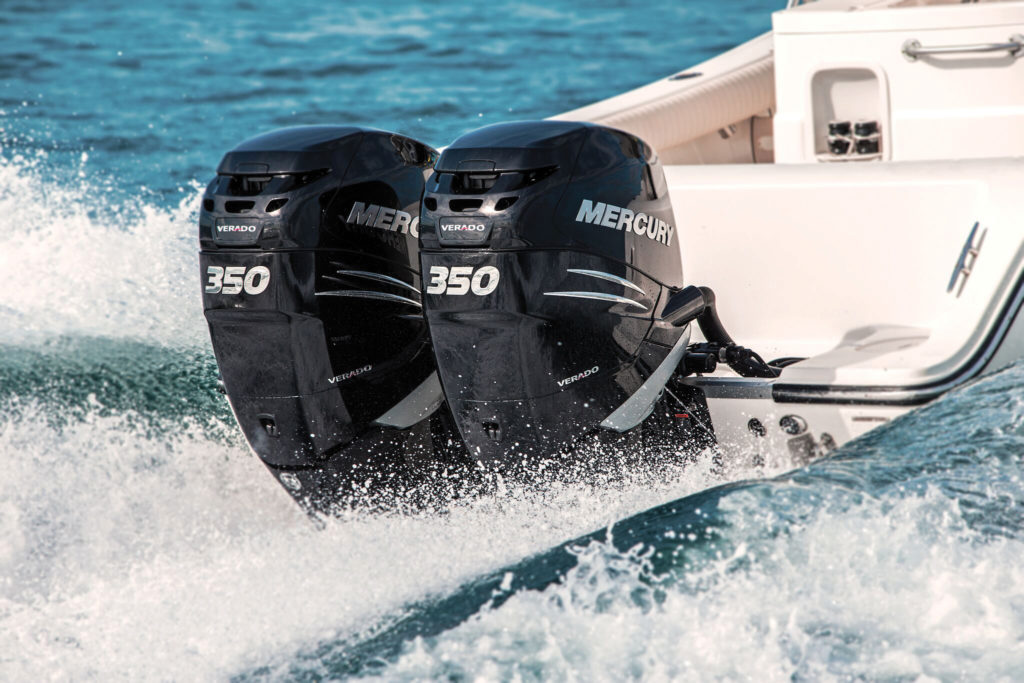
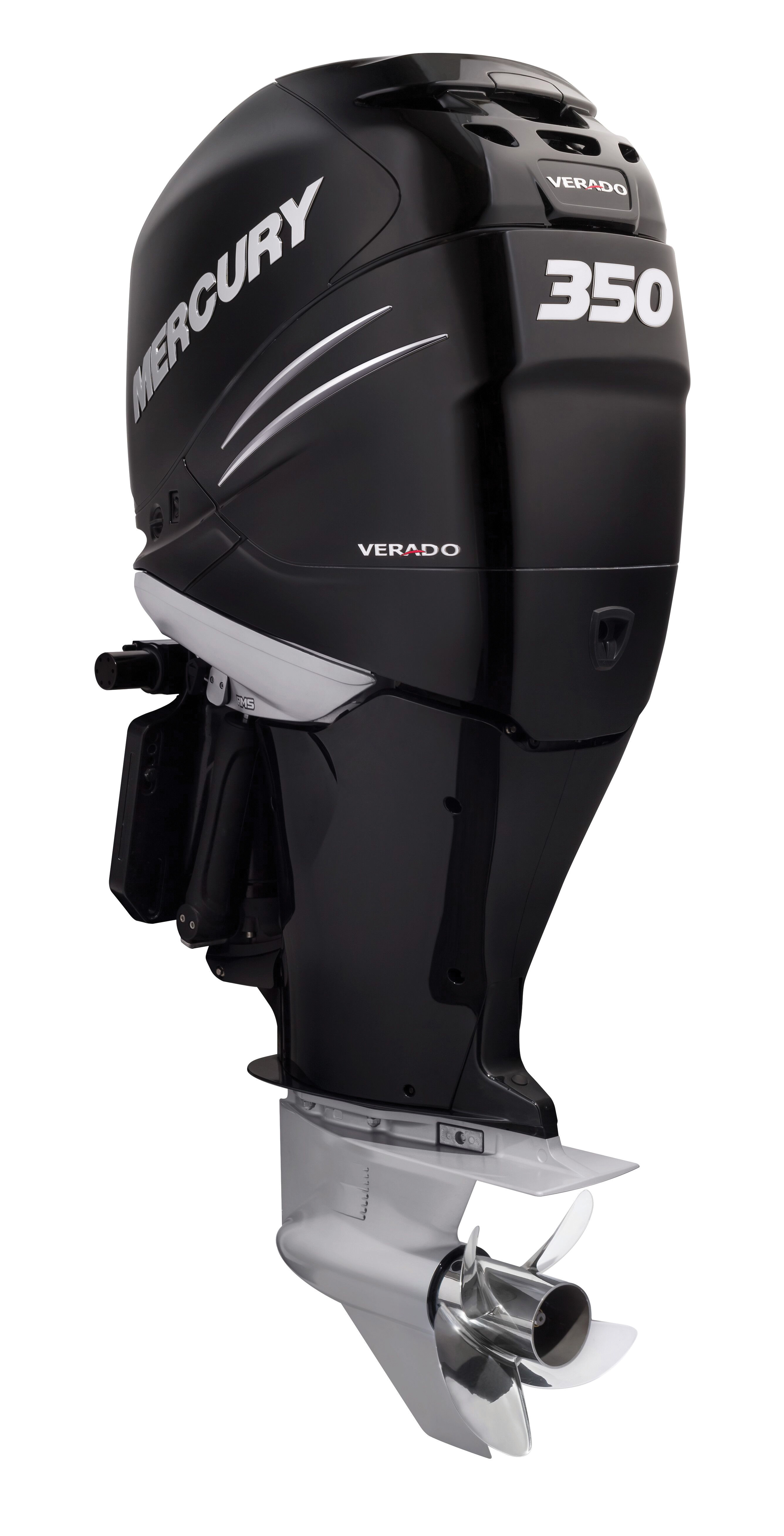 At the past Ft Lauderdale International Boat Show, the rumor mill was ripe with scuttlebutt that Mercury was getting closer to introducing a larger and more powerful four-stroke. However, my overtures to the Merc folks at the show to confirm this were unsuccessful—no one was saying anything—loose lips sink ships!
At the past Ft Lauderdale International Boat Show, the rumor mill was ripe with scuttlebutt that Mercury was getting closer to introducing a larger and more powerful four-stroke. However, my overtures to the Merc folks at the show to confirm this were unsuccessful—no one was saying anything—loose lips sink ships!
Looking back at Merc’s latest four-stroke introductions, the 115 Pro XS is perfect for a variety of coastal craft ranging from 17 to 20 feet. Based on the popular Mercury 115 FourStroke, the new Mercury 115 Pro XS delivers significantly better performance than any other high-output 115-horsepower outboard on the market today. In fact, the new 115 Pro XS is 16 pounds lighter than the two-stoke direct injected 115 OptiMax that it replaces, plus it’s 18 pounds lighter than the nearest 115-horsepower engine from this year’s competitive crop. The relatively large 2.1-liter displacement delivers higher torque, impressive acceleration and greater durability to the in-line four cylinder powerhead via an eight-valve, single overhead cam design.
Building on its Pro XS heritage, the new 115 Pro XS was intelligently designed to provide faster top speeds, with an elevated red-line. The 115 Pro XS FourStroke’s higher rpm range (5300-6300) offers improved performance out of an already-powerful engine. It accelerates faster than Mercury’s standard 115 FourStroke and has the ability to run larger, lower-pitch props for faster hole shots. Increasing engine rpm from 6000 to 6300 revs allows prop pitch to be reduced, typically resulting in faster throttle response. The available Command Thrust gearcase option takes this concept a step further, making this engine compatible with Mercury’s larger-diameter propellers. These help the engine deliver improved performance and lift heavy boats on plane easier and hold them there at lower speeds. The Mercury 115 Pro XS is available with either a 20-inch or 25-inch shaft length.
Mercury’s relatively new Verado 350 will appeal to bluewater anglers and delivers unsurpassed speed and overall performance without sacrificing durability and cruise fuel economy. Mercury test results reveal the highly efficient Verado 350, which can operate on 89 octane gas (91 octane is recommended for max performance), provides up to 10 percent greater fuel economy than competitive V-8 outboards. The secret to the Verado 350’s unbeatable combination of performance and fuel economy begins with its relatively lightweight, compact, supercharged design.
Honda
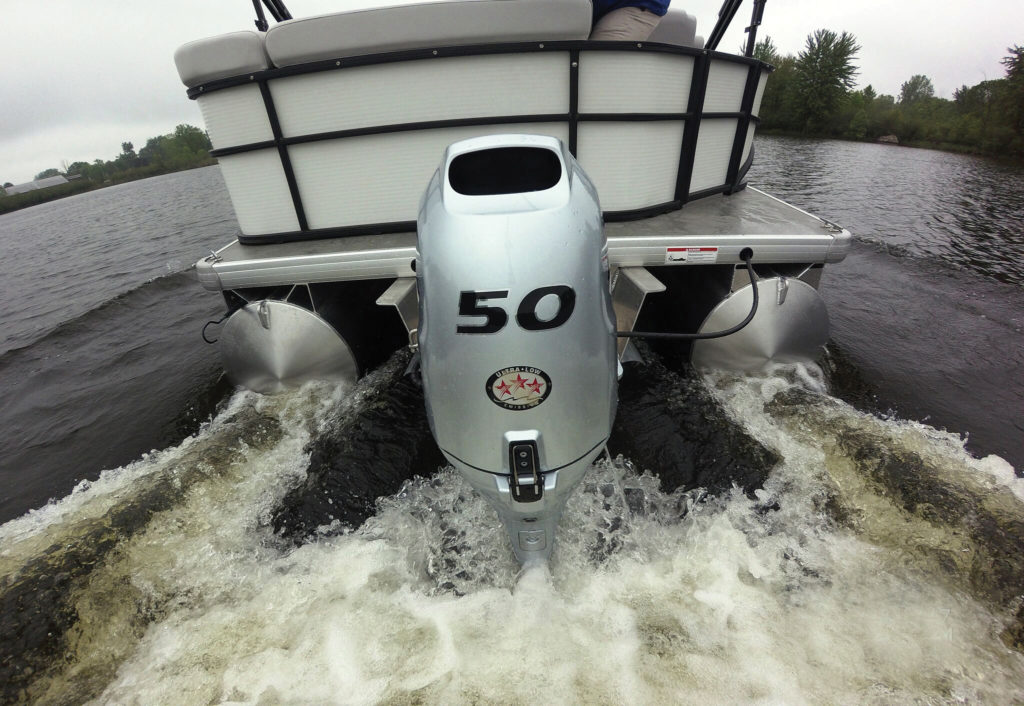
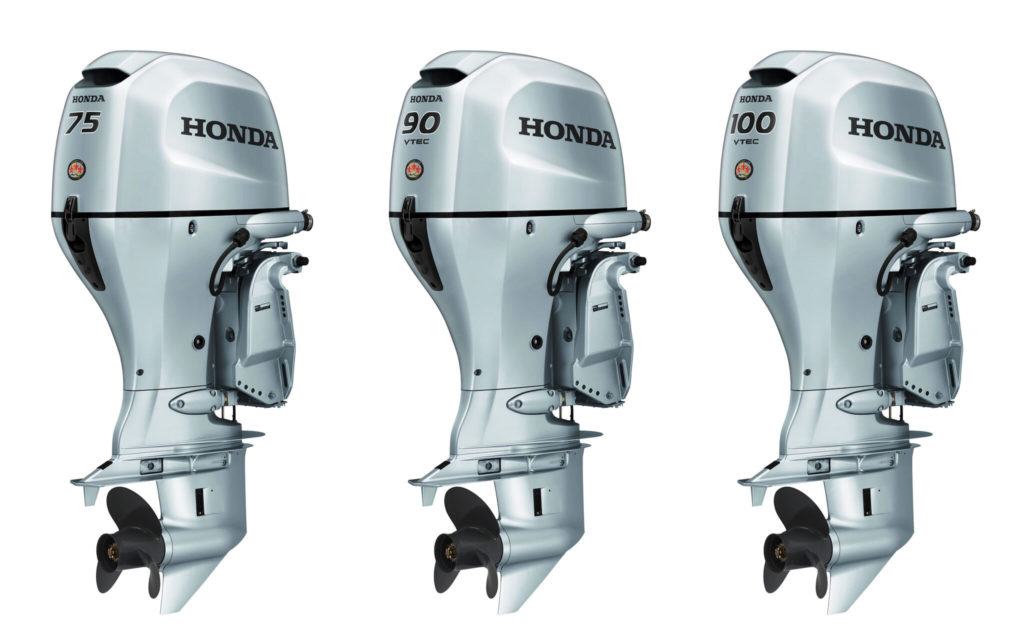 There’s a lot going on for the 2018 model year for Honda, with the introduction of five new four-stroke outboards, the BF40, BF50, BF75, BF90 and BF100. Introduced in the middle of 2017, the Honda Marine BF40 and BF50 EFI provide the perfect balance of powerful acceleration and fuel efficiency for both fresh and salt-water applications. With a new multi-function tiller handle, a multi-function-display with trolling control and a new switch panel application for multiple engine installations, the refreshed Honda Marine engines deliver welcome consumer upgrades. In addition, the BF40 and BF50 models have added a new freshwater flushing hose on the water jacket cover, plus they offer reduced engine vibration at idling compared with the previous Honda models. The duo’s in-line 3-cylinder engine block features electronic fuel injection (EFI) as well as several Honda-exclusive technologies, including Honda’s patented Boosted Low Speed Torque (BLAST) system, which advances ignition timing for explosive “hammer-down” acceleration, and a Lean Burn Control that adjusts the air/fuel mixture for maximum fuel efficiency at cruise. The BF40 and BF50 are among the lightest outboards in their class at 214 pounds and feature a powerful 22-amp alternator that offers a net 17-amp charging capacity for running multiple marine electronics accessories.
There’s a lot going on for the 2018 model year for Honda, with the introduction of five new four-stroke outboards, the BF40, BF50, BF75, BF90 and BF100. Introduced in the middle of 2017, the Honda Marine BF40 and BF50 EFI provide the perfect balance of powerful acceleration and fuel efficiency for both fresh and salt-water applications. With a new multi-function tiller handle, a multi-function-display with trolling control and a new switch panel application for multiple engine installations, the refreshed Honda Marine engines deliver welcome consumer upgrades. In addition, the BF40 and BF50 models have added a new freshwater flushing hose on the water jacket cover, plus they offer reduced engine vibration at idling compared with the previous Honda models. The duo’s in-line 3-cylinder engine block features electronic fuel injection (EFI) as well as several Honda-exclusive technologies, including Honda’s patented Boosted Low Speed Torque (BLAST) system, which advances ignition timing for explosive “hammer-down” acceleration, and a Lean Burn Control that adjusts the air/fuel mixture for maximum fuel efficiency at cruise. The BF40 and BF50 are among the lightest outboards in their class at 214 pounds and feature a powerful 22-amp alternator that offers a net 17-amp charging capacity for running multiple marine electronics accessories.
Also new for 2018 are a trio of Honda’s mid-sized outboards, the BF75, BF90 and BF100, all of which are based on an in-line 1496cc/91.4 cubic inch design. Honda Marine focused on improving the user experience for boaters with this redesigned trio of outboards. From low speed maneuvers to full-throttle boating, the Honda BF75, BF90 and BF100 deliver exceptional performance as well as excellent fuel efficiency. These refreshed Hondas feature new and upgraded rigging components including a new multi-function digital display and an all-new optional multi-function tiller handle that includes a larger shift lever, a power trim and tilt switch, a reversible shift lever, handle height adjustment and a variable trolling control switch. The design and technology that drives these new Honda mid-range marine engines is the very same that powers Honda automobiles such as the Honda Fit. This cross-platform integration illustrates Honda’s commitment to high performance, fuel efficiency and environmental friendliness. Key innovative features that make the Honda BF75-BF90-BF100 outboards one of the leading mid-range power choices include variable valve timing and lift electronics control (VTEC); programmed fuel injection (PGM-FI); a boosted low speed torque system (BLAST); and a lean burn control. White outboards are now offered on the BF150, BF200, BF225 and BF250 engines. Honda Marine’s Intelligent Shift & Throttle (iST) system was introduced in 2014 on the BF250 outboard motor and has now been expanded to include the BF200 and BF225 outboard motors.
Evinrude
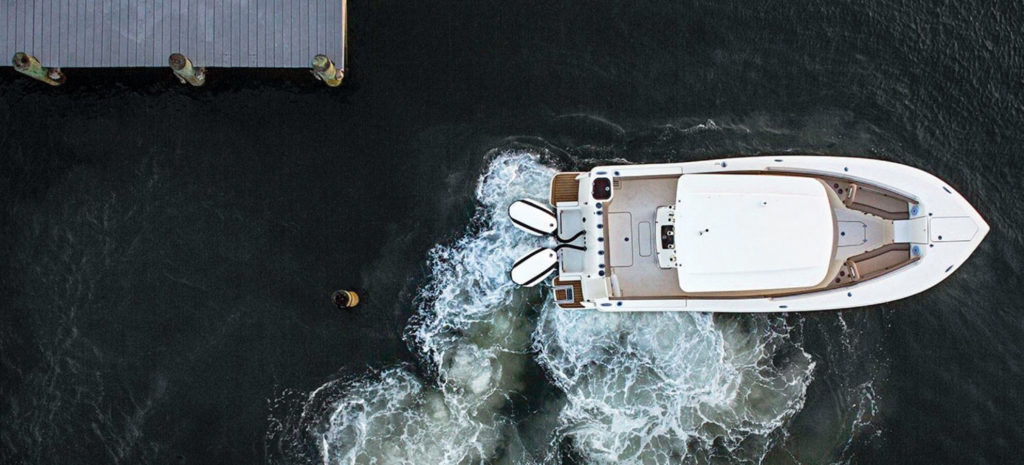
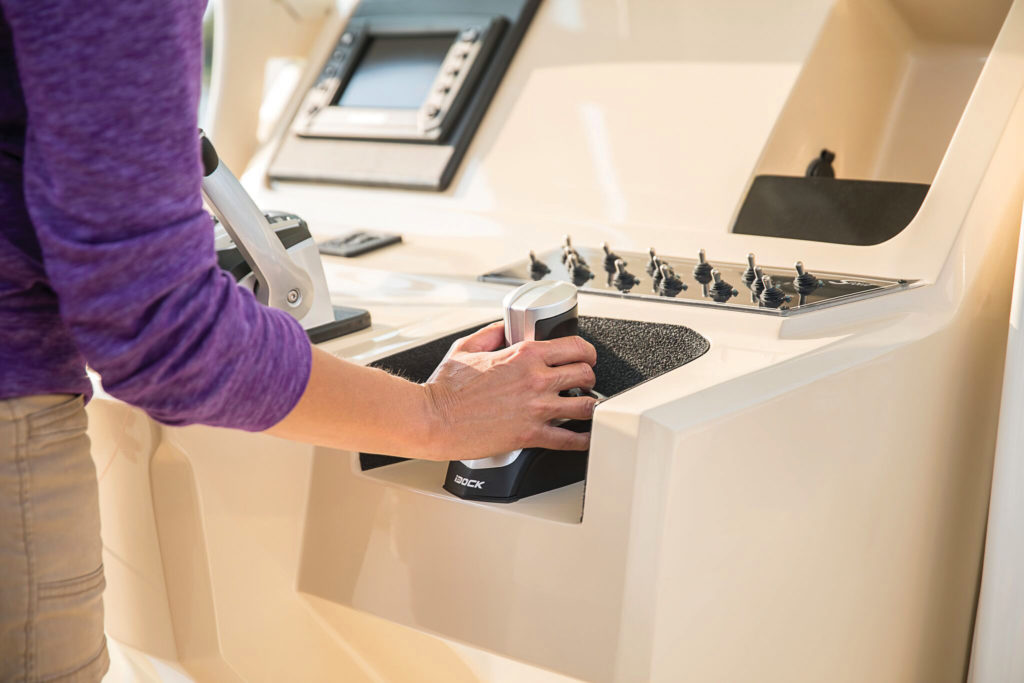 The scoop from the Evinrude factory folks at the Ft Lauderdale show is that the next-gen G2outboards will be expanding their profile with a gradual phase in and replacement in the 150- to 300-horsepower range, with the smaller two-stroke outboards getting the same treatment shortly following. Other big news from big-E at the show was the new promo for factory-backed 10-year warranty coverage, up from the standard 6-year plan. This great deal has an expiration date, so reach out to your local Evinrude dealer to learn more. The latest innovation from Evinrude is their iDock system, which I got to try out on a “flight simulator” machine at the Evinrude booth. It case you missed our recent write-up, the Evinrude iDock system provides 360-degree maneuvering agility with fingertip control, allowing the operator to negotiate crowded areas, dock the vessel, or stall the boat over an inshore rip or local wreck. Smart Cylinders with rudder position sensors allow twin Evinrude E-TEC engines to be controlled independently or in tandem to maneuver the boat sideways, diagonally, forward and backwards, rotate on its axis or even crab-over sideways to accomplish tricky docking maneuvers.
The scoop from the Evinrude factory folks at the Ft Lauderdale show is that the next-gen G2outboards will be expanding their profile with a gradual phase in and replacement in the 150- to 300-horsepower range, with the smaller two-stroke outboards getting the same treatment shortly following. Other big news from big-E at the show was the new promo for factory-backed 10-year warranty coverage, up from the standard 6-year plan. This great deal has an expiration date, so reach out to your local Evinrude dealer to learn more. The latest innovation from Evinrude is their iDock system, which I got to try out on a “flight simulator” machine at the Evinrude booth. It case you missed our recent write-up, the Evinrude iDock system provides 360-degree maneuvering agility with fingertip control, allowing the operator to negotiate crowded areas, dock the vessel, or stall the boat over an inshore rip or local wreck. Smart Cylinders with rudder position sensors allow twin Evinrude E-TEC engines to be controlled independently or in tandem to maneuver the boat sideways, diagonally, forward and backwards, rotate on its axis or even crab-over sideways to accomplish tricky docking maneuvers.
Suzuki
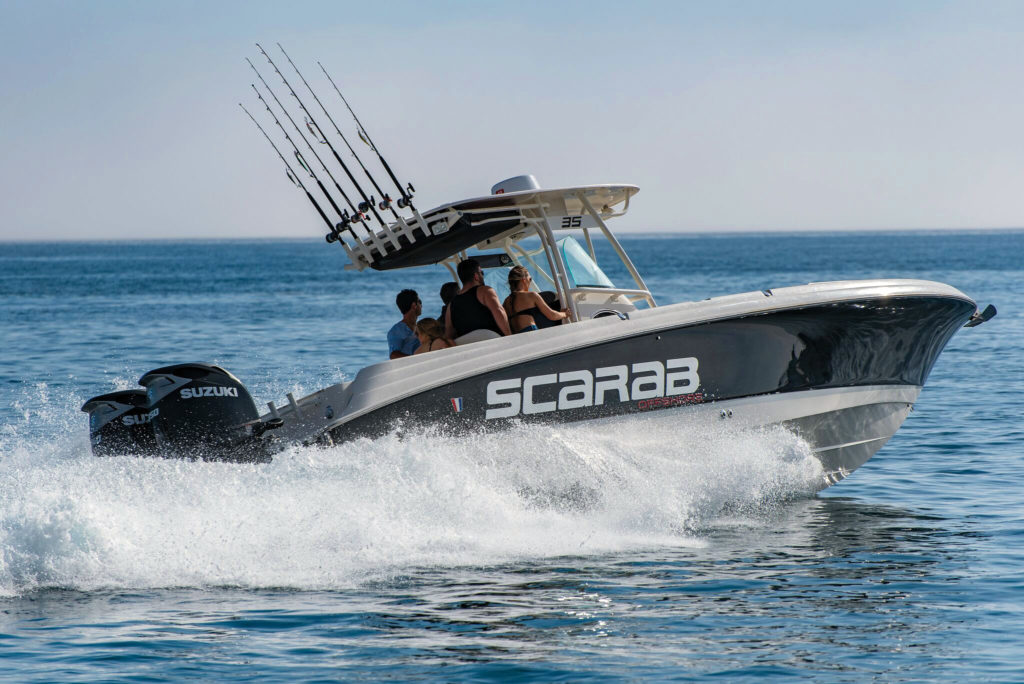
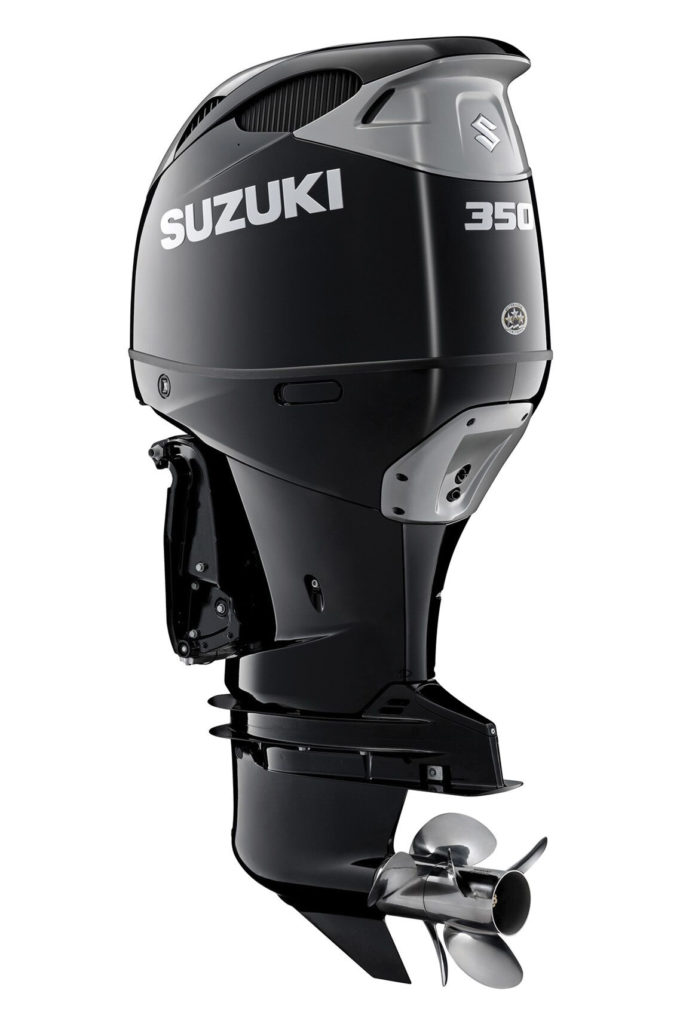 Suzuki’s big reveal actually happened a few months before the Ft Lauderdale boat show and it was in the form of their new DF350 four-stroke V-6 outboard. There was still a lot of interest from the south Florida crowd about this unique design, and the orders at the local dealers’ desks were brisk. The DF350A features Suzuki’s proven Precision Control, drive-by-wire throttle and shift controls, which ensure smooth shifting, precise control of the throttle position and easier rigging. Like Suzuki’s other V-6 outboards, the DF350A features Suzuki’s offset driveshaft engine layout, which allows for a more compact outboard and two-stage gear reduction. Two-stage gear reduction provides a larger reduction gear ratio (2.29:1) and more torque for both quick acceleration and improvements in top speed. The narrow bank 55-degree V-6 design of the DF350A allows these powerful four-strokes to be mounted on relatively compact 27-inch centers, so it will fit on more transoms and take up less space in twin, triple and quad installations.
Suzuki’s big reveal actually happened a few months before the Ft Lauderdale boat show and it was in the form of their new DF350 four-stroke V-6 outboard. There was still a lot of interest from the south Florida crowd about this unique design, and the orders at the local dealers’ desks were brisk. The DF350A features Suzuki’s proven Precision Control, drive-by-wire throttle and shift controls, which ensure smooth shifting, precise control of the throttle position and easier rigging. Like Suzuki’s other V-6 outboards, the DF350A features Suzuki’s offset driveshaft engine layout, which allows for a more compact outboard and two-stage gear reduction. Two-stage gear reduction provides a larger reduction gear ratio (2.29:1) and more torque for both quick acceleration and improvements in top speed. The narrow bank 55-degree V-6 design of the DF350A allows these powerful four-strokes to be mounted on relatively compact 27-inch centers, so it will fit on more transoms and take up less space in twin, triple and quad installations.
The Suzuki engineers broke new ground with the DF350A’s lower unit. While contra-rotating propellers are not a new technology, they have never been successfully used on four-stroke outboard motors until now. The DF350A’s dual propellers provide three key benefits, specifically compact size, increased stability and greater traction. By distributing the power of the engine over six blades, instead of just three, the size of the gears and gearcase is kept to a minimum, which in turn allows for the design of a sleeker, more hydrodynamic gearcase. Suzuki engineers knew that reducing underwater drag would be essential to improving overall boat speed and performance. Contra-rotating propellers also provide added surface area, which results in rapid acceleration, quick hole-shots, more predictable directional propulsion, a reduction in steering torque, increased top speeds and impressive reverse thrust. Plus the need for counter-rotating engines is now a thing of the past. According to Suzuki’s initial field tests, these benefits are apparent even on heavier boats with full loads of fuel, gear and people. Dual water intakes located at the leading edge of the gearcase bullet and on either side of the skeg ensure that a constant flow of cooling water gets to the powerhead to keep things cool during those long days offshore.
Tohatsu
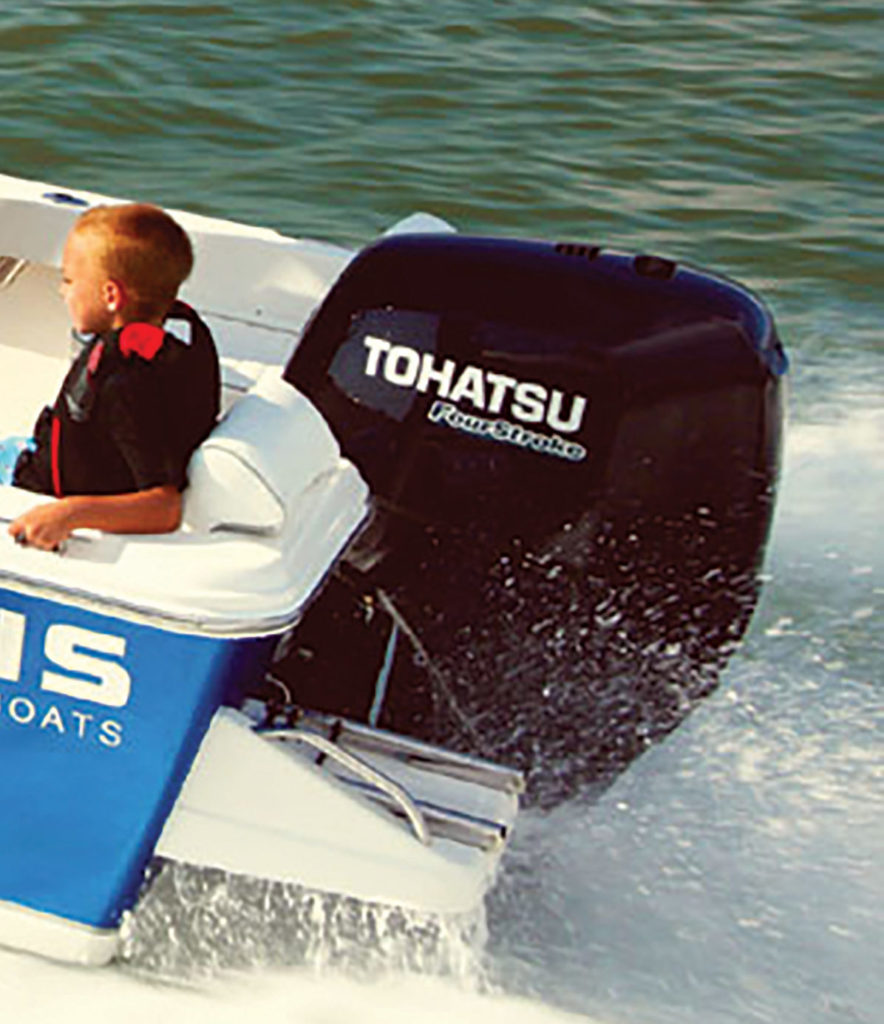
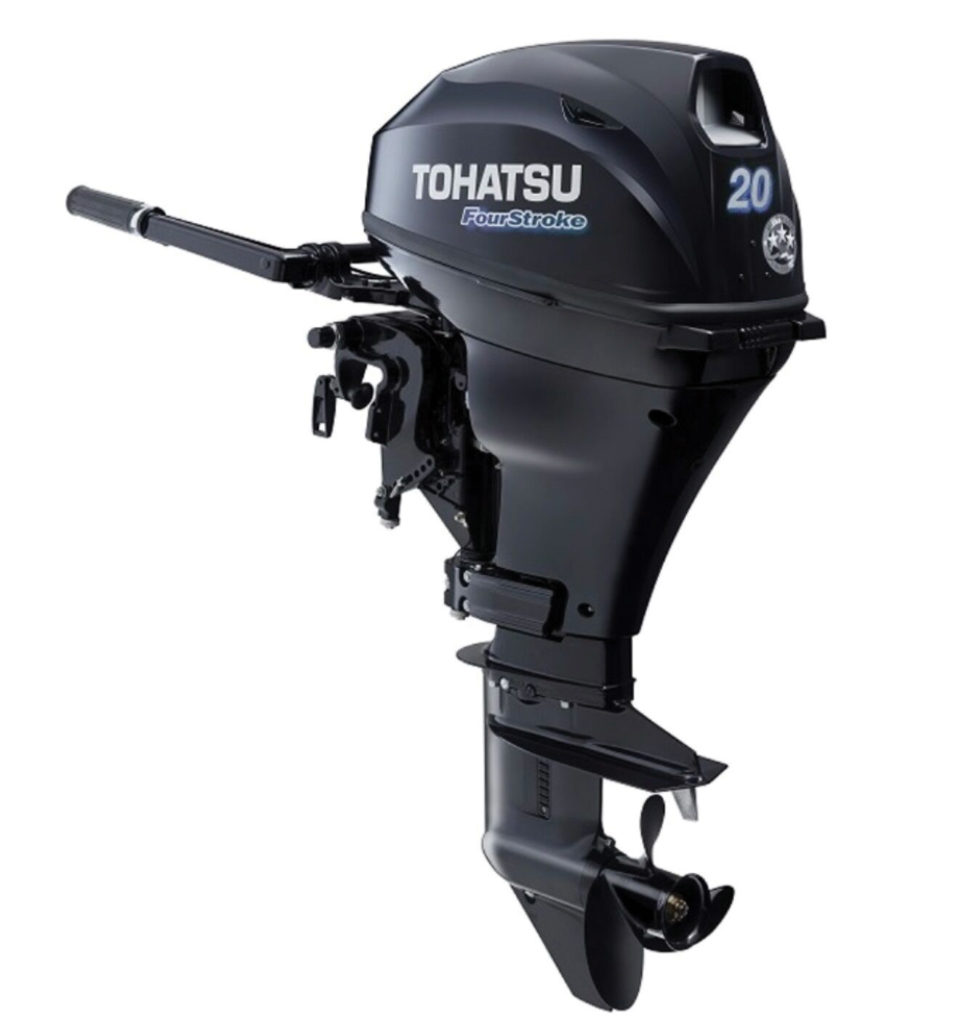 For 2018, Tohatsu (and sister company Nissan) divided their outboards into three separate groups. The expanded BFT series of four-strokes include the 200, 225, and 250 V-6 outboards, the 135-150-horsepower in-line fours, plus the 60-, 75-, 80-, 90- and 100-horsepower mid-range outboards, all of which are essentially repainted Hondas. The MFS series are the remaining four-stroke Tohatsu legacy engine, with a total of 15 power choices and a pair of liquid propane models. As is the trend lately, some of these outboards are available in a white color motif. The last group of Tohatsu outboards are their two-strokes, named the MD series. These include 30-, 40-, 50-, 75-, 90- and 100-horsepower offerings, all of which are direct injected. The TLDI system provides all of the things you need in an outboard, including superior performance with exceptional fuel and oil savings. A TLDI outboard produces low exhaust emissions and meets all federal and state requirements for outboard emission control. Acceleration from low to high speed is extremely smooth, making the outboard very responsive. With a Tohatsu TLDI outboard you get all the punch and power of a two-stroke, but with the low noise and fuel efficiency of a four-stroke.
For 2018, Tohatsu (and sister company Nissan) divided their outboards into three separate groups. The expanded BFT series of four-strokes include the 200, 225, and 250 V-6 outboards, the 135-150-horsepower in-line fours, plus the 60-, 75-, 80-, 90- and 100-horsepower mid-range outboards, all of which are essentially repainted Hondas. The MFS series are the remaining four-stroke Tohatsu legacy engine, with a total of 15 power choices and a pair of liquid propane models. As is the trend lately, some of these outboards are available in a white color motif. The last group of Tohatsu outboards are their two-strokes, named the MD series. These include 30-, 40-, 50-, 75-, 90- and 100-horsepower offerings, all of which are direct injected. The TLDI system provides all of the things you need in an outboard, including superior performance with exceptional fuel and oil savings. A TLDI outboard produces low exhaust emissions and meets all federal and state requirements for outboard emission control. Acceleration from low to high speed is extremely smooth, making the outboard very responsive. With a Tohatsu TLDI outboard you get all the punch and power of a two-stroke, but with the low noise and fuel efficiency of a four-stroke.
For 2018, Tohatsu introduced its new MFS20E, MFS15E and MFS9.9E four-stroke models, all of which employ a battery-less Electronic Fuel Injection (EFI) system. These are some of the lightest EFI outboards in their class, featuring excellent performance with low noise and minimal powerhead vibration. Going with EFI on these smaller outboards is a great move because this fuel system offers easy start-ups with no choke required, plus smooth, crisp acceleration throughout all RPM ranges. Another added benefit of EFI versus a carburetor is the fuel efficiency at wide open throttle, which allows boaters to go up to 50 percent farther on less fuel. Tohatsu’s new MFS20/15/9.9 EFI outboards inherited the popular Light Weight ECO Sport development and design concept from their signature MFS50/40A models. By moving heavy components such as the crankshaft and driveshaft 30mm forward compared to the previous models, the tilting weight has decreased by 26 percent, requiring less effort.

